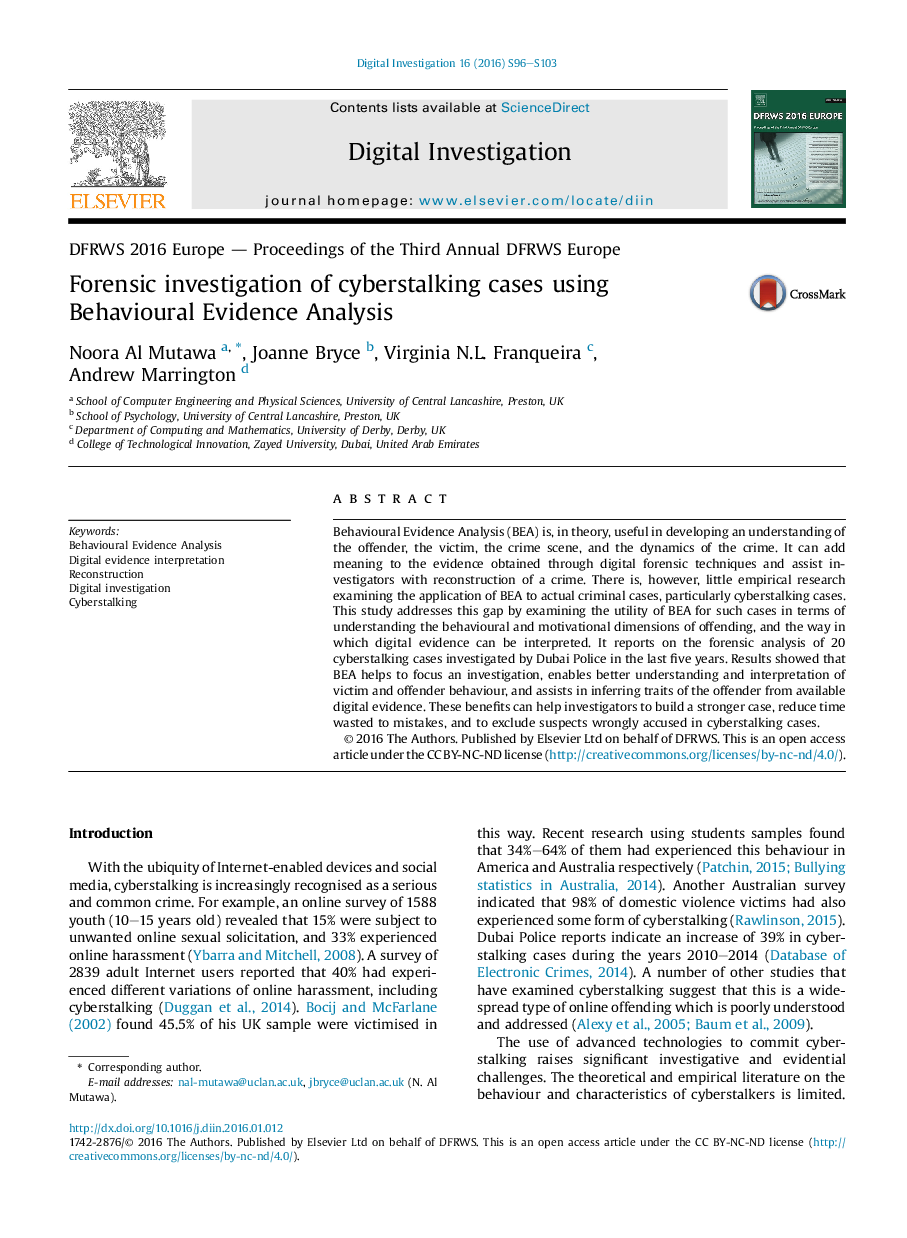| Article ID | Journal | Published Year | Pages | File Type |
|---|---|---|---|---|
| 10342357 | Digital Investigation | 2016 | 8 Pages |
Abstract
Behavioural Evidence Analysis (BEA) is, in theory, useful in developing an understanding of the offender, the victim, the crime scene, and the dynamics of the crime. It can add meaning to the evidence obtained through digital forensic techniques and assist investigators with reconstruction of a crime. There is, however, little empirical research examining the application of BEA to actual criminal cases, particularly cyberstalking cases. This study addresses this gap by examining the utility of BEA for such cases in terms of understanding the behavioural and motivational dimensions of offending, and the way in which digital evidence can be interpreted. It reports on the forensic analysis of 20 cyberstalking cases investigated by Dubai Police in the last five years. Results showed that BEA helps to focus an investigation, enables better understanding and interpretation of victim and offender behaviour, and assists in inferring traits of the offender from available digital evidence. These benefits can help investigators to build a stronger case, reduce time wasted to mistakes, and to exclude suspects wrongly accused in cyberstalking cases.
Related Topics
Physical Sciences and Engineering
Computer Science
Computer Networks and Communications
Authors
Noora Al Mutawa, Joanne Bryce, Virginia N.L. Franqueira, Andrew Marrington,
